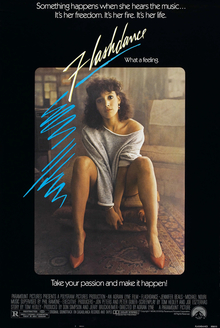
Flashdance is a 1983 American romantic drama dance film directed by Adrian Lyne and starring Jennifer Beals as a passionate young dancer, Alex Owens, who aspires to become a professional ballerina, alongside Michael Nouri, who plays her boyfriend and the owner of the steel mill where she works by day in Pittsburgh. It was the first collaboration of producers Don Simpson and Jerry Bruckheimer, and the presentation of some sequences in the style of music videos was an influence on other 1980s films including Footloose, Purple Rain, and Top Gun, Simpson and Bruckheimer's most famous production. It was also one of Lyne's first major film releases, building on television commercials. Alex's elaborate dance sequences were shot using body doubles.

Giovanni Giorgio Moroder is an Italian composer and music producer. Dubbed the "Father of Disco", Moroder is credited with pioneering Euro disco and electronic dance music. His work with synthesizers had a large influence on several music genres such as hi-NRG, Italo disco, synth-pop, new wave, house and techno music.
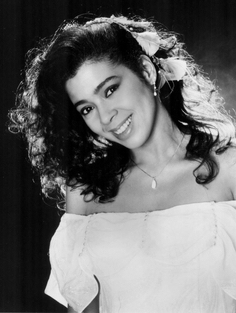
Irene Cara Escalera was an American singer and actress who rose to prominence for her role as Coco Hernandez in the 1980 musical film Fame, and for recording the film's title song "Fame", which reached No. 1 in several countries. In 1983, Cara co-wrote and sang the song "Flashdance... What a Feeling", for which she shared an Academy Award for Best Original Song and won a Grammy Award for Best Female Pop Vocal Performance in 1984.

"Flashdance... What a Feeling" is a song from the 1983 film Flashdance with music by Giorgio Moroder and lyrics by Keith Forsey and the song's performer, Irene Cara. The song spent six weeks at number one on the Billboard Hot 100 and topped the charts around the world. It was awarded Gold certification by the Recording Industry Association of America for sales of one million copies and won the Academy Award and Golden Globe for Best Original Song and earned Cara the Grammy Award for Best Female Pop Vocal Performance. In 2023, the song was chosen by the Library of Congress for inclusion in the National Recording Registry.

Albert Eli Coury was an American music record executive and producer who was vice-president of Capitol Records, co-founder of RSO Records, founder of Network Records and general manager of Geffen Records.

Scarface: Music from the Original Motion Picture Soundtrack is the soundtrack album featured on the 1983 American crime film, Scarface, which was directed by Brian De Palma. Composed by Italian producer Giorgio Moroder, the vinyl soundtrack was released on December 9 of the same year through MCA Records. The album features music created by Moroder, who wrote and produced all of the tracks. Scarface counts with the collaboration of multiple singers, including Paul Engemann, Debbie Harry, Amy Holland, Elizabeth Daily, among other artists. The soundtrack received a Golden Globe Award nomination for Best Original Score at the 41st Golden Globe Awards.
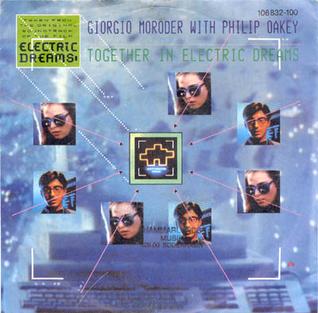
"Together in Electric Dreams" is a song by the British singer and composer Philip Oakey and Italian composer and producer Giorgio Moroder. It was written by Oakey and Moroder and recorded for the original soundtrack of the film Electric Dreams (1984). It later formed part of the joint album Philip Oakey & Giorgio Moroder, released in 1985.
Keith Forsey is an English pop musician and record producer.
What a Feeling may refer to:
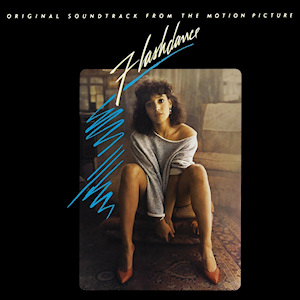
Flashdance: Original Soundtrack from the Motion Picture is the soundtrack to the 1983 film Flashdance, which tells the story of Alex Owens, a welder and exotic dancer who dreams of becoming a professional ballerina. The nightclub performances by Alex and her co-workers and other set pieces involving training and auditioning provided opportunities to present the songs that would make up the soundtrack album. The film's music supervisor, Phil Ramone, made selections that he felt were the best fit for their respective scenes, and composer Giorgio Moroder contributed additional tracks in the process of scoring the film. One of his contributions, "Flashdance...What a Feeling" by Irene Cara, was released as a single in March 1983, weeks before the film's April 15 release, and eventually spent six weeks at number one on the Billboard Hot 100. The soundtrack was released on April 11, 1983 by Casablanca Records.

American Gigolo is the soundtrack album to the 1980 film of the same name, starring Richard Gere and Lauren Hutton. The music was composed and performed by Italian musician Giorgio Moroder and was released worldwide on the Polydor label. It peaked at number 7 on the Billboard 200 album chart. All the cuts from the soundtrack also went to number two for five weeks on the disco/dance charts.

D.C. Cab: Music from the Original Motion Picture Soundtrack is the soundtrack to the 1983 film D.C. Cab. The producers selected artists for the album who were popular with a young, black audience, and the popularity of one of the film's stars, Mr. T, prompted the film's distributor to release the film four months earlier than planned. D.C. Cab performed poorly at the box office, and the soundtrack peaked at number 181 on the album chart in Billboard magazine.
Richie Zito is an American songwriter, composer and record producer from Los Angeles. In a career spanning more than 50 years, Zito has experienced success as a prolific session musician, being featured on a wide array of other artists' recordings, including work with Joe Cocker, White Lion, Poison, Mr. Big, Neil Sedaka, Yvonne Elliman, Charlie Sexton, Eric Carmen, Art Garfunkel, Leo Sayer, Diana Ross, Marc Tanner, Elton John, Cher, The Motels, as well as The Cult, Eddie Money, Heart, Juliet Simms, Bad English and Prism.
"Out Here on My Own" is a ballad from the 1980 musical film Fame, performed by Irene Cara. It was written by sibling songwriting duo Lesley Gore (lyricist) and Michael Gore (composer). The recording was produced by Michael Gore. Cara performed the song at the 1981 Academy Awards, where it was nominated for Best Original Song. The song was released on the Fame soundtrack, which also contains an instrumental version of the track.

"Why Me?" is a song written by Giorgio Moroder, Keith Forsey, and the song's performer, Irene Cara, that was the first official single to be released from Cara's 1983 album, What a Feelin', making it the follow-up to the songwriting trio's previous project for Cara, "Flashdance... What a Feeling". This new collaboration, however, was described as having more of a hard rock edge and had lyrics that conveyed the difficulties in a relationship.
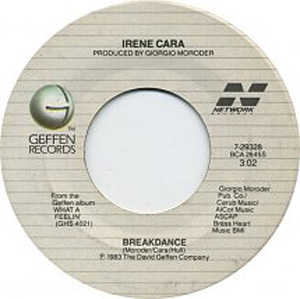
"Breakdance" is a song written by Giorgio Moroder, Bunny Hull, and the song's performer, Irene Cara. Moroder's obsession with the dance hit "Rockit" by Herbie Hancock fueled his composition of the music, and Cara was inspired by the street performers she saw growing up in the South Bronx to write lyrics about what was then called breakdancing. Released in March 1984, it was the third single that originated on her What a Feelin' LP and her first to make the top ten in the US since the album's title track went to number one almost a year earlier. "Breakdance" also charted in several other countries and had a dance remix that was also well received.

"You Were Made for Me" is a song written by Eddie Brown and the song's performer, Irene Cara. It was the fourth and final single that originated on her 1983 LP What a Feelin' and the only ballad included on it. While Giorgio Moroder had written the music for most of the songs on the album, Cara is credited as the composer on "You Were Made for Me". Whereas the previous singles spawned dance remixes and did well on the pop and R&B charts, "You Were Made for Me" had its biggest success on the Adult Contemporary charts in the US and Canada. It was also her last chart hit in the US.
"Lady, Lady, Lady" is a 1983 song written by Giorgio Moroder and Keith Forsey and performed by singer Joe Esposito for the film Flashdance. It was released as a single from the soundtrack to the film.

Jeri Keever "Bunny" Hull is an American songwriter, musician, and author. Her catalog includes music, film and television projects. She is a recipient of 20 Gold and Platinum Certifications, a Grammy Award and two nominations, an Emmy nomination, a GMA Dove Award, a BMI Performance Award, and multiple Parents' Choice Awards. In 2021, Hull was inducted into the Women Songwriters Hall of Fame.

"The Dream (Hold On to Your Dream)" is a song written by Giorgio Moroder, Pete Bellotte, and the song's performer, Irene Cara, for the 1983 film D.C. Cab. Although not included on initial pressings of Cara's What a Feelin' LP, the decision to release the film four months earlier than originally slated prompted an arrangement for her album to be reissued with the song. A slightly different version (more noticeable in the intro) was also included on the film's soundtrack album; an edited version was released on the 7-inch single, and the 12-inch single included a much longer dance remix.















